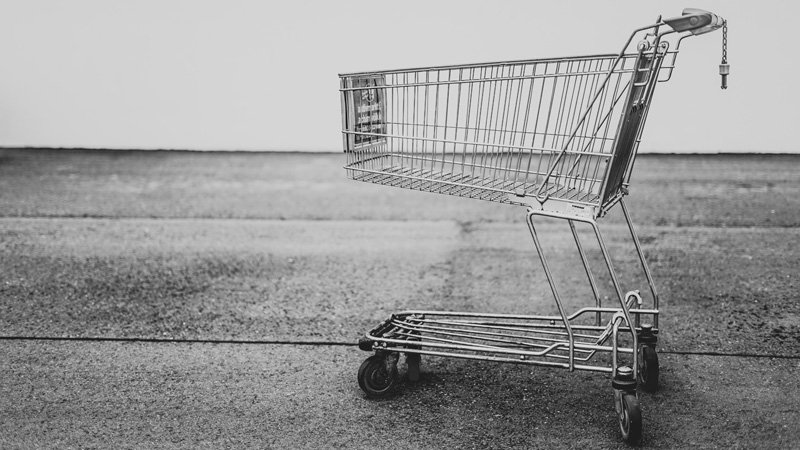
- Spending on clothing saw its highest growth in almost a year, as shoppers snapped up new summer outfits
- Restaurants fell at their sharpest rate since January, yet pubs, bars & clubs saw strong growth, fuelled by warmer weather and rising beer prices
- The start of the festival season gave sports and outdoor retailers a boost, while home improvement & DIY stores were another bright spot
- Brits remain concerned about their budgets being eroded by “shrinkflation” at the supermarket, and “drip pricing” when shopping online
- The Barclays report combines hundreds of millions of customer transactions with consumer research to provide an in-depth view of UK spending
Consumer card spending grew 5.4 percent year-on-year in June – less than the latest CPIH* inflation rate of 7.9 percent, yet noticeably higher than in May (3.6 percent) – as the warm weather encouraged Brits to shop for summer clothes and socialise at pubs and bars. However, supermarket shoppers remain concerned about “shrinkflation”, while restaurants saw another slowdown as consumers continue to cut back on eating out to offset rising household bills.
Spending on groceries soared 9.5 percent year-on-year – the highest growth in the category in two years, yet still lower than the rate of food price inflation (18.4 percent). This comes as over two thirds (67 percent) of shoppers say they are looking for ways to reduce the cost of their weekly shop, with almost a third (32 percent) of these consumers shopping at multiple supermarkets to source a range of deals and two in five (39 percent) are buying more “yellow sticker” items.
In a further sign that Brits are seeking out value-for-money wherever possible, discount stores were up 8.8 percent, seeing their largest growth since April 2021. Eight in 10 (81 percent) are worried about “shrinkflation” – when products are sold in smaller packages or portion sizes yet cost the same or more than they used to. In June, more Brits (70 percent) had noticed examples of shrinkflation than in May (65 percent), particularly when buying chocolate (46 percent), crisps (42 per cent), packs of biscuits (37 percent) and snack bars (32 percent).
In response to shrinkflation, 29 percent of shoppers are buying their favourite products less often – only when they want to treat themselves – while almost a fifth (18 percent) are switching to brands which haven’t changed the size of their products.
Shoppers are also spotting shortages of certain products at the supermarket. Almost two fifths (37 percent) have noticed that some basic items – such as eggs, fresh produce and tinned staples – are regularly unavailable, while a fifth (20 percent) feel that there are fewer new products being introduced onto the shelves.
Sunny spell brings surge in summer spending
Spending on non-essential items increased by 5.7 percent in June – more than in May (3.0 percent) – largely thanks to the sunny weather driving demand for socialising with friends and family. The higher temperatures inspired shoppers to renew their summer wardrobes, with spending at clothing retailers rising 4.0 percent – the highest growth in almost a year – while pharmacy, health & beauty had its biggest boost (6.8 percent) since January.
After a decline in May (-1.9 percent), sports and outdoor retailers returned to growth (1.1 per cent), as consumers embraced more active, outdoor lifestyles and purchased camping equipment for Glastonbury and other festivals.
Meanwhile, home improvement and DIY stores, including garden centres, were another bright spot, seeing their first growth in over two years (3.9 percent) as Brits took advantage of the sunnier weather to spruce up their homes and gardens.
A mixed picture for eating and drinking
Spending at pubs, bars & clubs increased 8.4 per cent – their biggest boost since January this year. This growth was driven by several factors, including the warm weather, rising beer and alcohol prices, Father’s Day celebrations, and the respite from industrial action in the transport sector.
In contrast, restaurants saw yet another month of decline (-8.2 percent), with three in 10 (30 percent) Brits planning to spend less on eating out in order to offset rising household bills.
Instead, many are shifting their spending to specialist food and drink stores, including butchers and greengrocers, which enjoyed their highest increase (7.2 percent) since September 2021. This implies that Brits are choosing to spend more on high-quality ingredients for BBQs and premium home-cooked meals instead of eating out at restaurants.
In addition, almost a fifth (18 percent) of consumers say that to save money when dining out this summer, they are opting to order just a main meal, with no starter or dessert.
Growth in getaways
Brits continue to prioritise spending on holidays abroad, outpacing demand for staycations. Spending on airlines increased 33.5 percent, significantly greater than the growth of spending on international and domestic hotels, resorts and accommodation (up 5.4 percent).
Spending in the transport sector is also being increasingly impacted by “drip pricing” – where companies add extra fees and charges during the online checkout process, meaning that the final price is higher than what was originally advertised. More than four in 10 (43 percent) consumers report that they have noticed more examples of “drip pricing” when shopping online, especially on airline tickets (47 percent).
Esme Harwood, Director at Barclays, said: “June saw Brits get into the swing of summer, bringing a welcome boost to several sun-starved categories.
“Pubs & bars benefitted from Brits soaking up the sunshine in beer gardens, while butchers and garden centres saw a jump thanks to the arrival of barbecue season. Even clothing retailers, which have struggled since the start of the cost-of-living crisis, returned to growth, as consumers took advantage of the heat to refresh their summer wardrobes.”
Will Hobbs, Chief Investment Officer, UK Wealth Management, Barclays said: “The UK economy remains in a precarious spot. Inflation contagion is perhaps furthest advanced here on the evidence of incoming wage and core inflation data. There is more work for central bankers yet, even as the creaks and strains on the mortgage and other borrowings become increasingly audible.
“Difficult quarters lie ahead as the surge in interest rates continues to put pressure on household cash flows. However, there are mitigants. Much of that extra mortgage strain will fall on households more able to bear it, with significant excess savings still left over from the pandemic.”
*CPIH: Consumer Prices Index including owner occupiers’ housing costs
Image courtesy of Unsplash. Photo credit: Bruno Kelzer.










